- | 8:00 am
‘The visuals of today help create the reality of tomorrow:’ Why Hollywood is finally tackling climate change onscreen
For decades, fictional on-screen stories about climate have been apocalyptic, if they’ve existed at all. That’s finally changing.
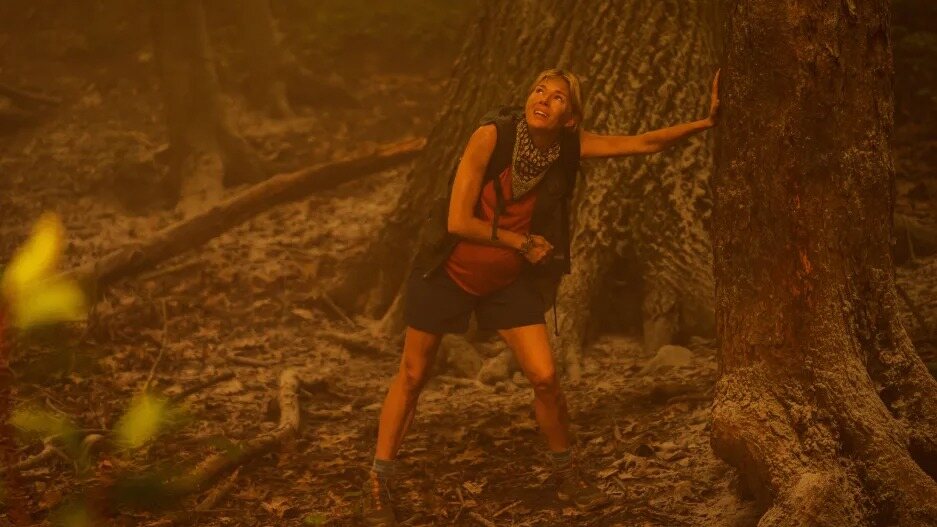
Dorothy Fortenberry has been trying to sneak climate change into the background of the TV shows she’s worked on for as long as she’s been in the business. As a writer on The Handmaid’s Tale, she succeeded in getting subtle details included—her characters drove electric cars or ate organic food as allusions to the story world’s ecological reality.
But for the first decade of her life as a screenwriter, her preoccupation with the environment and her work life only overlapped in those small ways. “For a long time, if you said to someone, ‘I’m doing a show about climate change,’ they would envision some sort of natural disaster—that was the storytelling shorthand.”
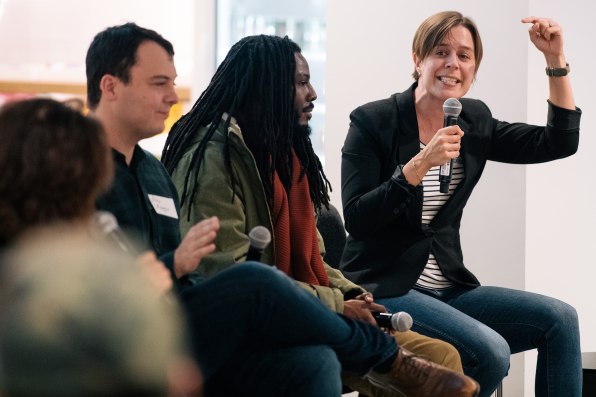
Fortenberry’s experience is indicative of a wider truth about fictional on-screen stories on climate over the past three decades: They’ve been rare, and when they’ve existed at all, they’ve been apocalyptic. Some of that has started to shift in recent years, due to a changing zeitgeist and organized efforts from inside and outside the industry, but the transition has been slow to materialize.
To Anna Jayne Joyner, founder of the climate-and-film-focused nonprofit Good Energy, this represents a missed opportunity to shape society’s collective approach to climate action. After all, she reasons, “How do Americans understand World War II? It’s not through history books, it’s through movies.”
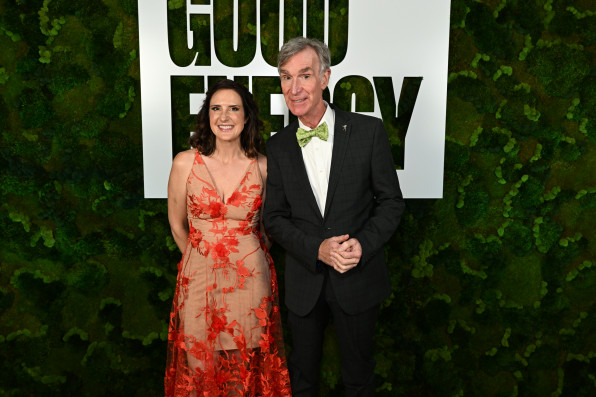
There’s reason to believe she’s right. While the impact of entertainment on people’s beliefs and behaviors is difficult to precisely measure, some evidence seems to support the idea that queer representation in popular culture helped pave the way for marriage equality and that a coordinated effort among entertainment studios in the ‘80s and ‘90s to popularize “designated drivers” contributed to a decrease in drunk driving. And according to Stanford researcher Emily Coren, the positive impact of “education entertainment” on public health outcomes, like teen pregnancy and safe sex, is well-documented.
So why hasn’t Hollywood’s significant cultural muscle been deployed in a serious way to combat the most existential threat humankind has ever faced?
For Daniel Hinerfeld, director of the film initiative Rewrite the Future at the Natural Resources Defense Council (NRDC) and an Emmy-winning filmmaker himself, this question highlights a disconnect between life as we know it and life as it appears on screen. “Hollywood has not reflected the greatest drama of our generation,” he says.

His observation is born out by recent data. A 2022 Good Energy and USC Media Impact Project report analyzed 37,453 TV and film scripts from 2016 to 2020 and found that only 2.8% of them included any climate-related keywords, like “ice caps,” “fossil fuel,” or “clean energy.” Even fewer—0.6%—mentioned “climate change” explicitly. When contrasted with the facts that one in 3 Americans lived in a county that experienced an extreme weather disaster in 2021, and more Americans are “alarmed” and “concerned” about climate change than ever, the report’s findings paint a picture of a film and TV landscape that is deeply out of step with a majority of viewers’ lived reality.
Even in the rare cases when climate is portrayed on screen, it often paints a false and narrow picture of how the climate crisis will be solved, and by whom.
When USC researchers asked viewers if they remembered climate content in TV or film, “the only two that showed up with any sort of prevalence” were The Day After Tomorrow and 2012, notes Joyner—the former of which features wildly inaccurate science, the latter which is not actually about climate at all, and both of which feature straight, white male protagonists who must rally, superhero-like, to save the day.
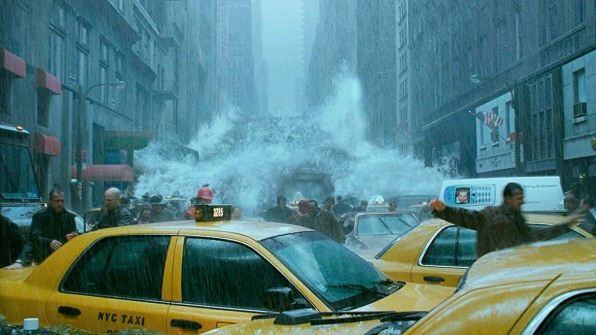
Beyond the faulty science and depressing outlook, these depictions uphold a longstanding fallacy that climate change is a white people problem, even though people of color are disproportionately impacted by climate change and are more concerned about climate than their white peers. “If you only see one set of people being the hero, that’s not going to broaden the movement,” says Reverend Lennox Yearwood Jr., founder of the environmental justice organization Hip Hop Caucus, which has long posited that the cultural sector has a crucial role to play in propelling climate action.

Plus, climate change isn’t a problem that can be solved by a lone hero taking drastic action over the course of one monumental day, argues Fortenberry. “Climate change is an ongoing, unfolding process that will be with us the rest of our lives. How do we make something that conveys that this is a lifelong process?” she asks. “What does it look like when people try to grapple with something as a community, and it’s not just one person fighting bad guys by themself?”
Joyner, Hinerfeld, and Reverend Yearwood’s initiatives at Good Energy, NRDC, and Hip Hop Caucus, respectively, have sought to engage filmmakers in answering just those sorts of questions. In 2019, Hinerfeld and Joyner collaborated on an event with Cheryl Slean, then-creative director of Rewrite the Future who’s since moved on to Netflix, to convene industry creatives interested in climate. They were encouraged to be met with an overwhelmingly enthusiastic response. “People were palpably relieved to be connected to others in the industry who were not only worried about climate, but thinking about it through the context of their creative work,” says Joyner.
In other words, industry professionals are more interested in integrating climate into their work than the current state of climate narratives in film and TV might lead you to believe. The barriers holding them back are as complicated as the set of reasons that keep anyone, working in any field, from engaging in meaningful climate action.
Meredith Milton, creative director of the NRDC’s Rewrite the Future and a former studio executive who has worked on films like The Eyes of Tammy Faye, says there can be a misconception that climate stories are too “depressing, preachy, boring, or political.” Fortenberry notes that “everybody in Hollywood wants to do the last successful thing, which makes it hard until there’s a successful thing.” According to the Climate Culture Entertainment Lab at the environmental nonprofit Rare, it may also be the case that writers and showrunners want to incorporate more climate content, but don’t have time for the research that would allow them to do so confidently. Others, Hinerfeld says, just don’t seem to have a sense of their own agency; they may be concerned about increasingly intense fires and floods, but they don’t see how their work can help.
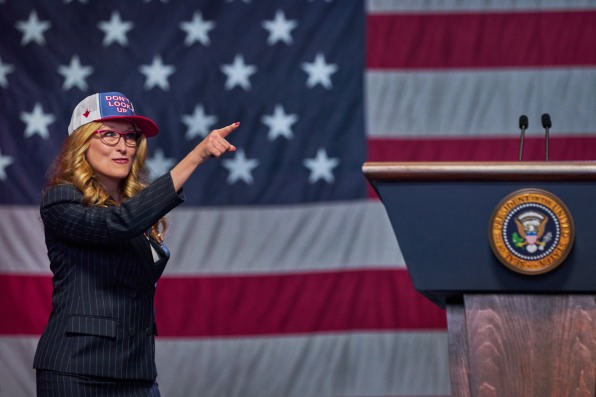
Whatever the barriers have been, they’ve started to shift noticeably in the last few years. From the outside, this is made most obvious by the success of films like 2021’s Don’t Look Up, but Milton, Hinerfeld, and Joyner are also hearing about it from industry insiders.
Perhaps no one has experienced this shift more personally, and more dramatically, than Fortenberry. After years of trying to shove climate through the cracks of every show she worked on, Fortenberry was asked to join Scott Z. Burns as co-showrunner on a new narrative Apple TV show, which centers climate change in grandiose fashion, via a series of vignettes that imagine how humans will be grappling with everything from species extinction to geo-engineering over the next five decades. Extrapolations is set to debut on March 17, featuring a star-studded cast that includes Meryl Streep, Daveed Diggs, Gemma Chan, Yara Shahidi, and Marion Cotillard. It will, as far as Fortenberry knows, be the largest-budget fictional show about climate change ever made.
“The biggest thing that feels different about this show is that it’s not a utopia or a dystopia. It’s a muddle-through-topia,” Fortenberry says. “What we’re trying to do is be like: What if things just kept going like they’re going? What if there were real losses and crises, but also real moments of grace and connection?”
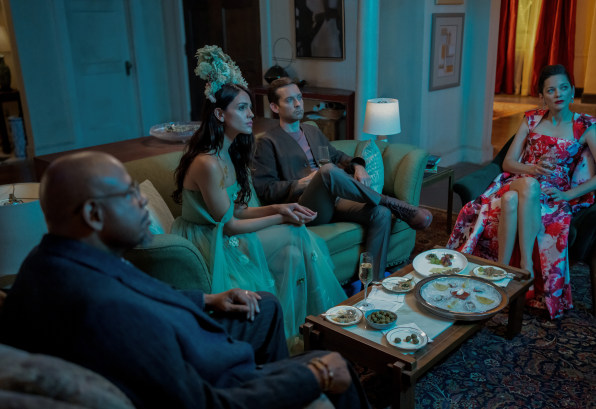
Extrapolations is important, in part, because of what it symbolizes—a non-apocalypse (though not disaster-free) climate story getting major studio backing, rather than being sidelined. The show also demonstrates the subject matter’s power to attract top talent. At a Tribeca Film Festival panel in 2022, Fortenberry hinted that the show’s environmental focus was a factor in getting “super famous, incredibly talented” A-listers who “never do television” to sign on.
Extrapolations also exemplifies another way the industry is shifting: in the greening of productions themselves. The show hired sustainability consultancy Green Spark Group to advise on that front. Stars were asked not to take private jets if they wanted to be involved, Fortenberry said at Tribeca; other sustainability efforts included using solar-powered trailers and hybrid or electric vehicles whenever possible.
The approach is catching on. “We are beginning to see Hollywood recognizing that it’s in its own financial interest to begin moving in this direction,” says Hinerfeld.
Sony VP of safety and sustainability John Rego notes that the company has forged a bevy of partnerships with climate and environmental orgs, lent its IP and marketing muscle to their campaigns (think Smurfs doing PR duty for the U.S. Forest Service), and is working on increasing renewable energy and minimizing plastic use at its production lots. And Netflix created its first sustainability officer role in 2020; according to Emma Stewart, who holds that title, she helps provide research support to creators looking to integrate sustainability into character arcs or plotlines. The company also announced a partnership with General Motors in February to “increase the presence of EVs in Netflix-produced shows,” including Queer Eye, Love is Blind, and Unstable over the course of the next year.
Though Rego spends much of his time working on lowering the climate impact of Sony’s physical operations, he acknowledges the importance of the messages embedded in the content itself. “The visuals of today help create the reality of tomorrow,” he says. “We’ve certainly seen that in science fiction.”
Anirudh Tiwathia, lead behavioral scientist at Rare’s Entertainment Lab, is trying to gauge exactly what kind of impact climate messaging in film and TV can have. He has a strong instinct that there’s “the potential for seismic impact,” but as a scientist, he cautions that it’s not always as straightforward as it might seem.
“Measuring the impact of entertainment is incredibly challenging—especially when we are concerned with behavior change rather than issue awareness or changes in attitudes,” he says. Still, he and his team are pouring significant time, resources, and energy into studying the issue in hopes of someday having more concrete data to offer. Whatever they ultimately find, Tiwathia says, “there’s no ‘non-propaganda’ when you’re creating content, in that all content has impact.”
For now, Rare’s Entertainment Lab emphasizes adding small, climate-friendly behaviors to existing shows rather than making films or TV series that are explicitly about climate. It can be as simple as showing solar panels on the roof of a house in the suburbs, Tiwathia says. “The idea here is to make a much smaller ask of the writers across a wide range of genres,” he says. “If we can blanket the ecosystem with small but repeated mentions, humans pick up on that, and it starts altering their perceptions of what is the correct social norm.” It’s a tactic the fossil fuel industry has already started to employ, secretly paying TV personalities to parrot industry talking points on air, so the time is ripe for the climate movement to figure out a counter strategy.

Rare’s approach resonates with many climate advocates in the space. Though Joyner celebrates the significance of projects like Extrapolations and Don’t Look Up, she has moved away from the term “climate storytelling” because she wants to communicate to creatives that they don’t necessarily need to start writing a whole new genre—they can simply integrate climate into whatever they’re already working on.
Reverend Yearwood appreciates this approach too, noting that when subtle climate actions or mentions are authentically incorporated into shows like Blackish or Insecure, they help communicate to audiences that climate is “their issue, too.” Milton agrees, highlighting a storyline in Ted Lasso, in which a soccer player refuses to wear the name of a Big Oil company on his jersey, as a great example of seamless integration of a climate arc into a larger story.
As someone who has worked on shows where climate is the headline and others where it’s sprinkled subtly throughout, Fortenberry isn’t prescriptive about one approach or another. The main thing, she says, is just to “have climate in all kinds of genres in all kinds of ways, to keep it top of mind, and to make people feel not so alone.”
Coren, the Stanford researcher, has other ideas for how to amplify the positive climate impact of film and TV. She wants to create a GIS-based system that would let viewers connect to personalized, highly regional suggestions for how to take action on whatever issue they just learned about. “The recommendation ‘electrify your home’ versus ‘here is the phone number you call to get an estimate on how much it will cost to install a heat pump’ are very different,” she says. Hip Hop Caucus has experimented with a more analog version of this idea by taking films about specific environmental justice issues and screening them in churches, Boy Scout meetings, and other spaces in the communities most affected by those issues.
In the end, reversing the climate crisis isn’t as simple as writing a blockbuster script. More time and financial resources are needed to sort out how best to use Hollywood to move the needle in a positive direction. But with the fate of the planet hanging in the balance, there’s no challenge more worthy of our generation’s most creative minds.
“In a time of crisis, we need to have many, many, many heroes,” says Reverend Yearwood. “The only way you can create this is through culture and storytelling.”






































